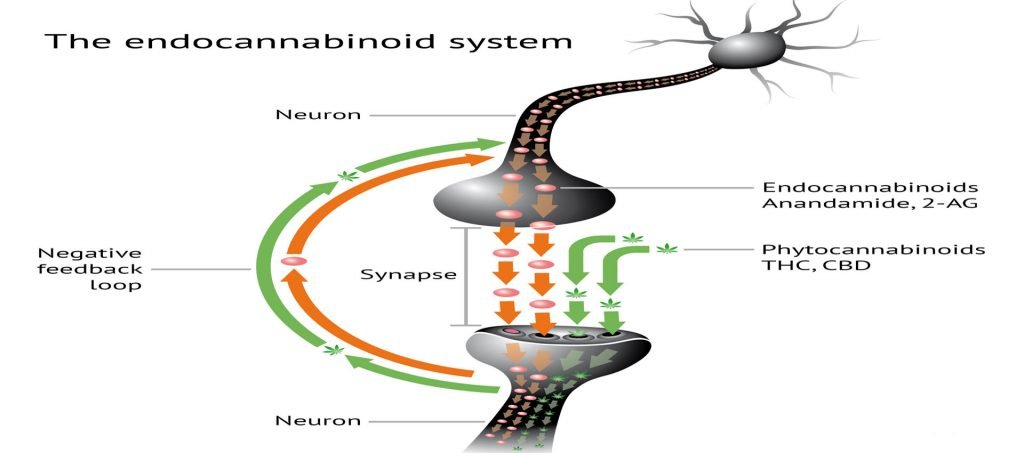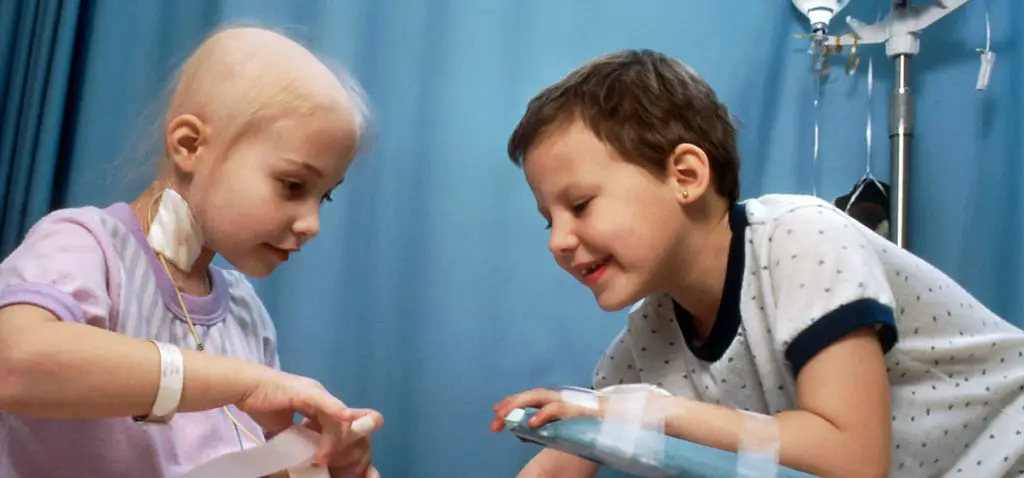More people today are aware of the medicinal benefits of marijuana. Cancer patients, for example, have taken to its use to alleviate pain, nausea, and boost the appetite. Sensational stories abound. Some even go on to proclaim this controversial plant as being an effective treatment or cure for the dreaded disease.
Can marijuana, indeed, cure cancer?

It sounds too good to be true. All those claims and testimonies, though, had to come from somewhere. Could they be merely fallacies, or do science have the facts?
Page Content
Marijuana & Cancer: An Overview
Before exploring the link between marijuana and cancer, you need to understand how the plant exerts its effects first. Essentially, it comes down to the compounds found in cannabis and the human endocannabinoid system.
1. Cannabinoids
These naturally occurring compounds give cannabis its purported health benefits. Currently, at least 113 cannabinoids have been identified, each exhibiting distinct effects. Delta9-tetrahydrocannabinol (delta9-THC or THC) and cannabidiol (CBD) are the most well-known and studied. Recently, too, the interest in cannabinol (CBN) is also mounting.

Artificial or man-made cannabinoids are also being manufactured. To date, the FDA has approved the use of two synthetic THC drugs – dronabinol and nabilone.
2. Endocannabinoid System
The endocannabinoid system (ECS) is a complex cell-signaling system that consists of endocannabinoids, receptors, and enzymes. It is mainly responsible for regulating a wide range of functions and processes, including appetite, chronic pain, inflammation, and immune response, among many others.
The endocannabinoids are similar to cannabinoids with one difference – they are produced within the body. For this reason, they are also called endogenous cannabinoids. So far, two endocannabinoids have been identified – anandamide (AEA) and 2-arachidonoylglyerol (2-AG).
These molecules bind to the cannabinoid receptors (CBRs), signaling them to act a certain way. Likewise, exogenous cannabinoids – such as THC and CBD – also interact with the CBRs to produce their touted effects.

There are two main types of CBRs:
- CB1 (found mostly in the central nervous system)
- CB2 (found mainly in the peripheral nervous system, especially immune cells)
Since THC shares a similar structure with AEA, it can activate both CB1 and CB2. CBD, on the other hand, has a low affinity with the said receptors, and can only bind with them indirectly.
Last but not least – enzymes. They are responsible for breaking down AEA and 2-AG once they have carried out their tasks.
3. Endocannabinoid System & Cancer
In the last decade, experts have tried to uncover the role of the ECS in cancer development. Unfortunately, the data tend to be inconsistent, making it hard to form a definitive answer. A recent review highlighted this dilemma.
For one, the upregulation of the CBR – and, in turn, high levels of endocannabinoids – has been observed in various cancer cells. The concentration may also be related to the aggressiveness of cancer. It indicates that the over-stimulation of the ECS may play a role in the development of cancer.
On the other hand, there is also evidence that the activation of the CBRs may inhibit cancer development. In other words, the endocannabinoid signaling may counteract rather than promote the formation of tumors.
How Marijuana Can Help With Cancer
Cancer is an umbrella term for more than 200 types of diseases. It is caused by the uncontrolled growth of abnormal cells. When these cells accumulate, they form a mass of tissue called the tumor. Eventually, the abnormal cells may also invade other tissues and organs. Globally, cancer is one of the leading causes of death.
Even now, there is still no cure for cancer. But, cancer research is in full swing, with experts all over the world gaining more insight every day.
The marijuana scene does not lag behind. In recent years, there has been a rise in studies investigating the effects of the plant on this deadly disease. The results, thus far, are promising.
1. Anticancer Effects
In existing preclinical studies (lab or animal tests), the results suggest that marijuana may help slow down or stop the growth of some tumors. Even as early as the 1970s, researchers had already noted such effects. When administered orally in mice, delta9-THC, delta8-THC, and CBN inhibited the growth of lung adenocarcinoma – the most common type of lung cancer – in a dose-dependent manner.

Mainly, cannabinoids exert their anticancer properties by acting on the signaling pathways involved in cell proliferation and survival. The exact molecular mechanisms, though, are not yet fully understood. At any rate, the cannabinoids likely impact three cancer-related activities:
- Cancer cell proliferation
- Autophagy and apoptosis
- Angiogenesis and metastasis
Cancer Cell Proliferation
Cell proliferation refers to an increase in the number of cells. In cancer, it relates to how quickly a cancer cell can replicate its DNA and then dividing into two. The faster the division, the more aggressive the cancer is. Consequently, it means that the malignant cells can spread throughout the body more rapidly.
Inhibiting cancer cell proliferation is a critical element in cancer therapy. There is evidence that cannabinoids have anti-proliferative activity. Along with apoptosis, it drives most of the antitumor effects of cannabis.
Cannabinoids may slow down or stop tumor proliferation via the proliferative and oncogenic pathways, including the adenylyl cyclase and cAMP/protein kinase. This activity has been observed in various types of cancer cells.
CBD, in particular, could be a potent inhibitor of cancer growth and spread. This anti-proliferative action likely derives from its ability to target multiple cellular pathways involved in tumor growth. It is not clear whether the cannabinoid and vanilloid receptors are involved.
Autophagy and Apoptosis
Autophagy – meaning “self-eating” – is a vital process where the cell consumes its internal structures. It is a way for the body to clean damaged or unnecessary cells and regenerate newer, healthier cells.
In cancer cells, autophagy may suppress the formation of tumors by inhibiting cancer cell survival and inducing cell death. At the same time, it may also facilitate tumor growth and cancer cell proliferation. Regulating autophagy, in this case, can be a promising target for cancer treatment.
Cannabinoids may promote autophagy in various types of cancer cells. Moreover, inhibiting this process blocked the antitumor properties of the compounds, suggesting that autophagy may play a key role in the anticancer activity of cannabinoids.
Apoptosis, on the other hand, is a form of programmed cell death. It helps keep the body healthy by removing old, unwanted cells. Too little or too much apoptosis is implicated in the development of diseases. Cancer, for instance, occurs when there is not enough apoptosis, thus preventing malignant cells from getting eliminated in the body.
Cannabinoids can halt tumor progression largely by inducing cancer cell death. In one study, THC and other cannabinoids triggered apoptosis in glioma cells via ceramide synthesis. This is likely due to the selective activation of the CB2 receptor.
CBD has also shown promise in inducing apoptosis by promoting programmed cell death in breast cancer cells. This activity was independent of cannabinoid and vanilloid receptor activation. Instead, it resulted from a complex interplay between apoptotic and autophagic signaling pathways.
Angiogenesis and Metastasis
Aside from influencing cell proliferation, autophagy, and apoptosis, cannabinoids may also produce their anticancer effects by blocking tumor angiogenesis and metastasis.
Angiogenesis refers to the formation of new blood vessels from existing ones. While essential to growth and healing, it can also play a role in the pathogenesis of several diseases – including cancer. That is because tumors need nutrients and oxygen – which is supplied by the blood – to grow and spread. More blood vessels mean more fuel for the tumors.
Inhibiting angiogenesis, in this case, could be a potential therapeutic target for cancer treatment. It primarily works by starving the tumor of nutrients and oxygen.
Cannabinoids may act as anti-angiogenic agents by decreasing the production of pro-angiogenic factors and/or by directly regulating the endothelial cells. CBD, for example, could inhibit angiogenesis in human umbilical vein endothelial cells (HUVECs) via the downregulation of several molecules associated with angiogenesis. Interestingly, CBD exerted such effects without inducing apoptosis.
Metastasis, on the other hand, refers to the spread of cancer cells from the site of origin to another part of the body. Anti-metastatic agents, in this regard, work by inhibiting cancer cell proliferation and tumor angiogenesis. Some may also improve immune function.
Cannabinoids may reduce metastasis and inhibit the invasiveness of various cancer cells. These anti-metastatic characteristics can be attributed to the stimulation of ceramide biosynthesis and the regulation of pathways involving the p8 protein. Even cannabinoids that do not act as agonists of CBRs – like CBD – display such activities.
Aside from this, CBD may also inhibit lung cancer cell invasion and metastasis via the upregulation of the intercellular adhesion molecule-1 (ICAM-1). This activity, in turn, has been linked to the increase of the tissue inhibitor of matrix metalloproteinases-1 (TIMP-1). THC also appeared to have ICAM-1-inducing properties.
Finally, CBD may help reduce the proliferation, invasion, and metastasis of breast cancer cells via the downregulation of Id-1 expression.
2. Boost The Efficacy Of Cancer Treatment
Several types of cancer treatments exist, including surgery, radiation therapy, and medications. Some patients only have one treatment, but most will receive a combination of two or more. Ultimately, the method depends on the type of cancer and its severity.
Research shows that cannabinoids may help enhance the effectiveness of traditional cancer treatment. Likewise, conventional therapy may also amplify the anticancer properties of the compounds.

In one study, researchers conducted in vivo and in vitro tests to assess the anticancer properties of the cannabinoids when used alongside radiotherapy (RT) or smart RT biomaterials. Not only was there a more significant tumor-killing action but also prolonged the sustained delivery of cannabinoids to the target sites. These synergistic effects could be tapped for the treatment of the deadliest cancers, particularly pancreatic and lung cancers.
A review of in vivo and in vitro studies confirmed that the cannabinoids could be a useful adjunct for pancreatic cancer treatment. Of note is the synergy between the compounds, most notably CBD and gemcitabine – a chemotherapy medication. Another review found that CBD may help enhance the activity of first-line cancer therapy.
3. Help Treat Cancer Symptoms
Research shows that marijuana may help manage cancer symptoms and treat side effects – from chronic pain to nausea and vomiting. Compared to traditional medications, it can address several symptoms simultaneously. Marijuana could also be used to complement standard therapeutic options. And for cancer patients who respond poorly to conventional treatments, cannabis may be the only viable option.

Pain
Cancer patients – and even survivors – often suffer from chronic pain, which can be mild to severe. For some, it can be debilitating and hard to manage. It could be due to tumor metastasis or cancer treatment.
Marijuana can help manage chronic pain – thanks to its potent analgesic properties.
Marijuana also works synergistically with opioids – pain relievers that can cause dependence and adverse effects. It may even act as opioid-sparing agents, allowing patients to use lower doses of opioids and, in turn, experience fewer side effects.
Neuropathy
Neuropathy – or nerve damage – is a common complication of chemotherapy drugs and other cancer treatments. It typically causes muscle weakness, numbness, tingling, and pain in the hands and feet. Both preclinical and clinical studies show that cannabis can help relieve neuropathic pain, hence improving the quality of life of patients.
Nausea and Vomiting
Cancer patients undergoing chemotherapy often experience nausea and vomiting as side effects. Cannabis, fortunately, has antiemetic properties and may be effective in controlling nausea and vomiting. Moreover, the FDA has approved the use of dronabinol and nabilone for the treatment of chemotherapy-induced nausea and vomiting.
Anorexia Or Cachexia
Anorexia refers to appetite loss, while cachexia is a wasting disorder that can cause extreme weight loss. Also called cancer anorexia/cachexia syndrome, it is highly prevalent in the advanced cancer stage. Research shows that marijuana may not only promote appetite and food intake in cancer patients but help induce body weight gain as well.
So, Can Marijuana Cure Cancer or Not?
Cancer is a lethal disease that has been plaguing humans since time immemorial. Can marijuana be the wonder drug that will finally put an end to it?
Unfortunately, there is not enough evidence indicating that marijuana can cure or treat cancer. In fact, the majority of the research has been done on cell cultures and animals – not humans. But, it can help with cancer in several other ways.

For one, cannabis has anticancer and antitumor effects. Primarily, these can be attributed to the anti-proliferative, pro-autophagic, pro-apoptotic, anti-angiogenic, and anti-metastatic properties of the cannabinoids. These, in turn, can be tapped to enhance the efficacy of conventional cancer treatments.
Thanks to its multiple health benefits, marijuana can also be used to address cancer complications and side effects – many of which can be debilitating. These include chronic pain, neuropathic pain, nausea and vomiting, and anorexia/cachexia syndrome. It can combat all these symptoms at the same time. Overall, marijuana can make life more comfortable and bearable for patients.
With the increasing legalization of marijuana, the research scene is expected to change dramatically. More studies and clinical trials may follow suit. Hopefully, it will not be long before experts further understand and validate its anticancer action. For the time being, make sure to seek the help of a healthcare professional if you want to self-medicate.





